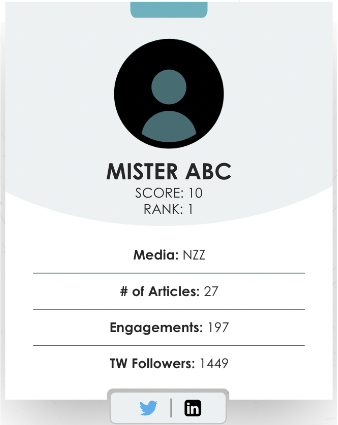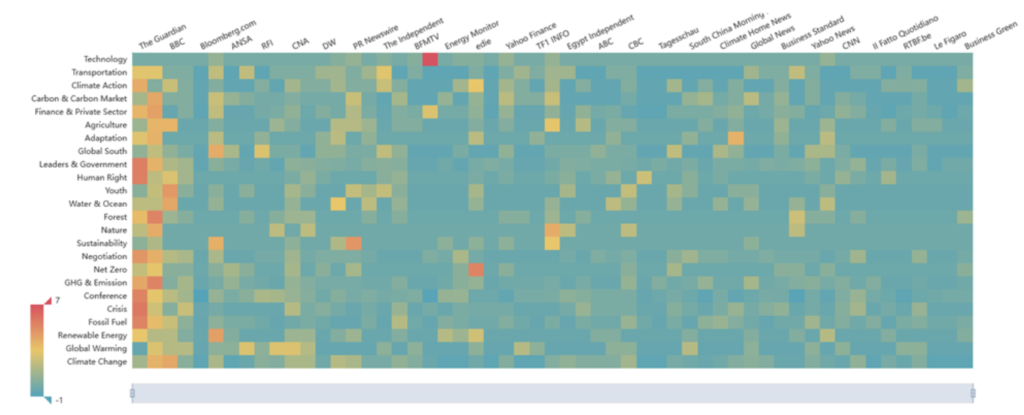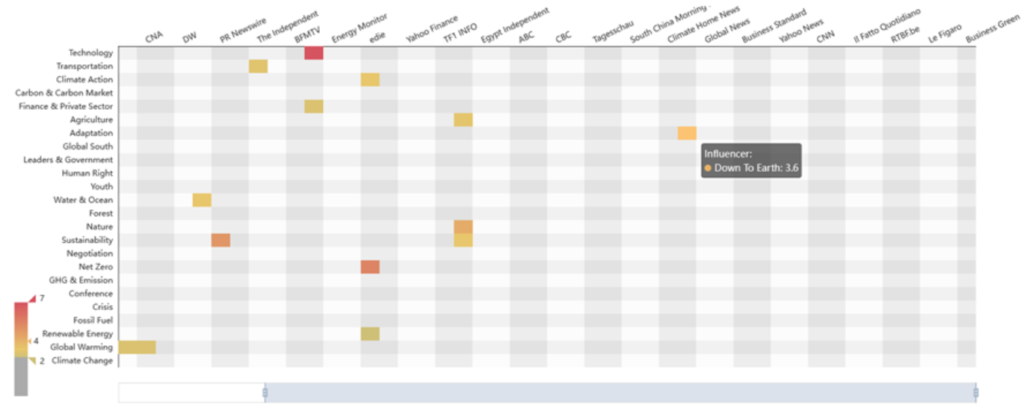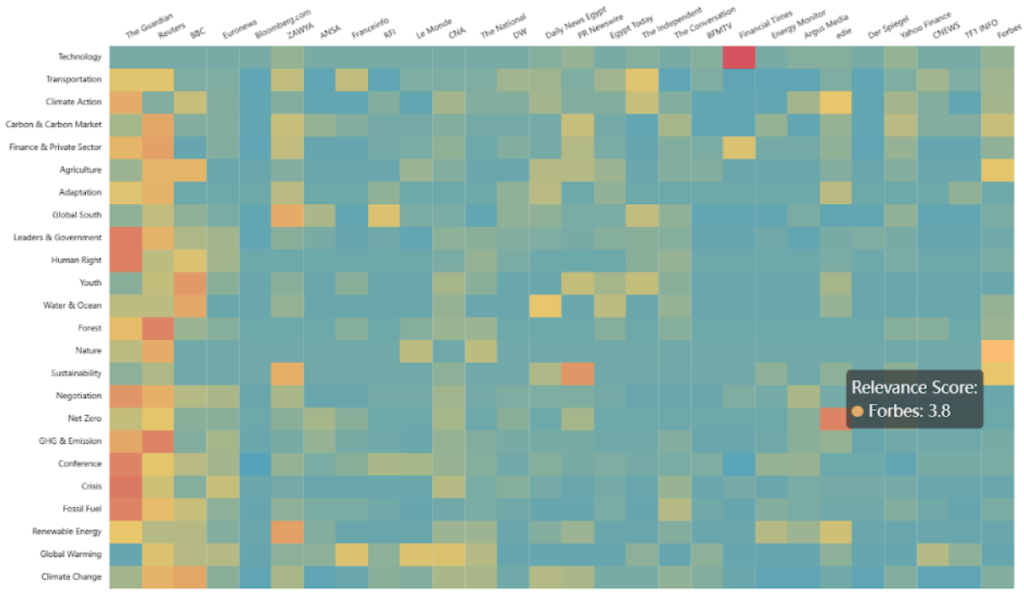Our automated, algorithmic search finds the best journalists, outlets, and key opinion leaders to amplify your message.
Do you want to broaden your press reach? Do you feel siloed within your industry’s media coverage?
PR agencies, and by extension the brands they represent, usually rely on the same network of journalists to promote key messages. While this can work well, breaking out beyond that network can broaden a campaign’s reach, change a narrative, or reach a different target audience.
That’s where Arboretica comes in. Using our proprietary algorithms, we identify an exhaustive list of journalists, thought leaders, and media outlets who fit your communication objectives based on their past writing, their publishers, their social media presence, and the engagement and traction their work gets.
Why Use Arboretica to Find Journalists?
Get An Exhaustive List of Journalists Within Your Industry
Gone are the days of wondering if you have missed a key journalist in your industry. Our automated search provides an exhaustive, ranked list of ALL journalists who write about topics that interest your company. You will see the most relevant people who can help you–and why–based on the data collected, not based on an existing network of journalists.
Reach Relevant Journalists Outside of Your Industry
To reach new audiences, we also work with our clients to identify relevant journalists outside of their industries. To do this, we run workshops with them to identify “bridge” industries or journalists. A “bridge” industry has similar characteristics or faces similar challenges as that of the client’s. A “bridge” journalist writes about a specific topic within another industry and can be approached to write about that same topic in the client’s industry. Combining these two “bridges” allows our team to identify and connect with new journalists and find new communication angles.
How Arboretica Identifies Journalists
To be clear, we do not have any relationships with journalists or media outlets. Our work relies on understanding publicly available information at scale: what articles have been published, who wrote them, what they are about, and how they perform on Twitter.
Here’s how we create a customized list of journalists for your company:
1.Establish Target Conversations, Topics, Geographies, and Timeframe
We work with your team to build a list of conversations and topics your company is interested in. These could be within your industry or in parallel industries. We also establish the locations your company would like to reach: is it a specific country, region, or municipality? Finally, we set a timeframe for how far back in time to collect articles. This could be as short as 2 weeks or as long as 5 years.
2. Identify and Validate Past Press Pieces
Taking the criteria we establish together, we use our algorithms to pull every single article from the web. We manually validate a few of these articles to ensure that our search results match what your company is looking for.
3. Extract the Journalists, Key Opinion Leaders, and Outlets From Each Article
We identify the author of every press piece, its source, and any thought leaders interviewed. We can quickly identify which journalists and sources write most frequently about the target topics.
4. Analyze Articles by Topic, Engagement, and Keywords
We use our proprietary algorithms to group articles into topics and sub-topics. From there, we analyze which topics are most frequently discussed and which get the highest engagement on platforms such as Twitter. Through our network analysis algorithm, we also identify the keywords that are most associated and used with your topics. This ultimately allows us to make recommendations for messaging angles that your company could prioritize.
5. Create List of Recommended Journalists and Outlets
To help you prioritize the contacts to reach out to, we create a ranked list of journalists. We develop the ranking criteria with our clients, as well as the weight we should attribute each one. The number of criteria is flexible but typically includes elements such as:
- The number of articles that the journalist has written about your topic of interest
- The engagement that the journalist’s articles get
- The authority of the sources that publish the journalist’s articles
- The journalist’s personal authority
The Deliverables
At the end of the month-long analysis, we deliver:
- A list of the top journalists based on the agreed criteria, including a profile ID card
- A list of key opinion leaders mentioned in the top articles
- An analysis of the volume of articles over time and their subtopics, including each subtopic’s volume, engagement, and top keywords
- A database of the top articles we identified along with relevant information (eg, journalists, topics covered, engagement, etc.)
- A database of journalists along with relevant information (eg, articles published, outlets, engagement, Twitter profiles, etc.)
- Recommended actions to take

These elements empower our clients–whether brands or PR agencies–to amplify their campaigns’ impact by reaching out to the top journalists and key opinion leaders.
Case Study: COP 27 Media Outlet and Journalist Identification
In order to prepare our clients for the upcoming COP 28–the United Nations Climate Change Conference–we analyzed conversations about COP 27. As part of a bigger analysis on all the conversations (in news and Twitter) that happened during the COP, we had a specific focus on journalists:
- Which journalists and media outlets published the most articles about COP 27?
- Which journalists and media outlets triggered the most interest about COP 27, and on which specific environmental topics?
To conduct our analysis, we pulled 400,000+ tweets related to COP 27 as well as 3,200+ media articles. We focused on conversations in English, French, Italian, and Spanish.
Overall Engagement
We identified the media outlets whose articles got the most engagement by environmental topic. We selected outlets that published at least 10 articles about the conference.
This matrix shows the media outlets in columns and the topics covered in rows. The resulting square’s color indicates how influential the outlet was in that topic: red indicates high influence and blue indicates low influence.
For example, The Guardian and BBC–in the left-hand columns–were influential across a range of environmental topics. In contrast, outlets such as Le Figaro and Business Green–in the right-hand columns–were only slightly influential across a small number of topics.

Identifying Influential Media Outlets
This matrix helped us identify influential media outlets by environmental topic. Some of the results were surprising because they surfaced previously unknown outlets.
In the view below, we’re able to see that, for the environmental topic “Adaptation,” the publication Down to Earth has the most influence.

Interestingly, Forbes, a news and business publication, had high influence over environmental topics such as Agriculture, Sustainability, and Nature. Take a look here:

Identifying Influential Journalists
Using this analysis of media outlets, we can also pinpoint the best journalist to approach for specific environmental topics.
Using this information, we can make better recommendations to our clients who want to prepare a campaign focused on COP 28. Our analysis can be used by their internal communications teams as well as by their PR agency.
Does your organization need to expand its press reach? If so, contact us.


